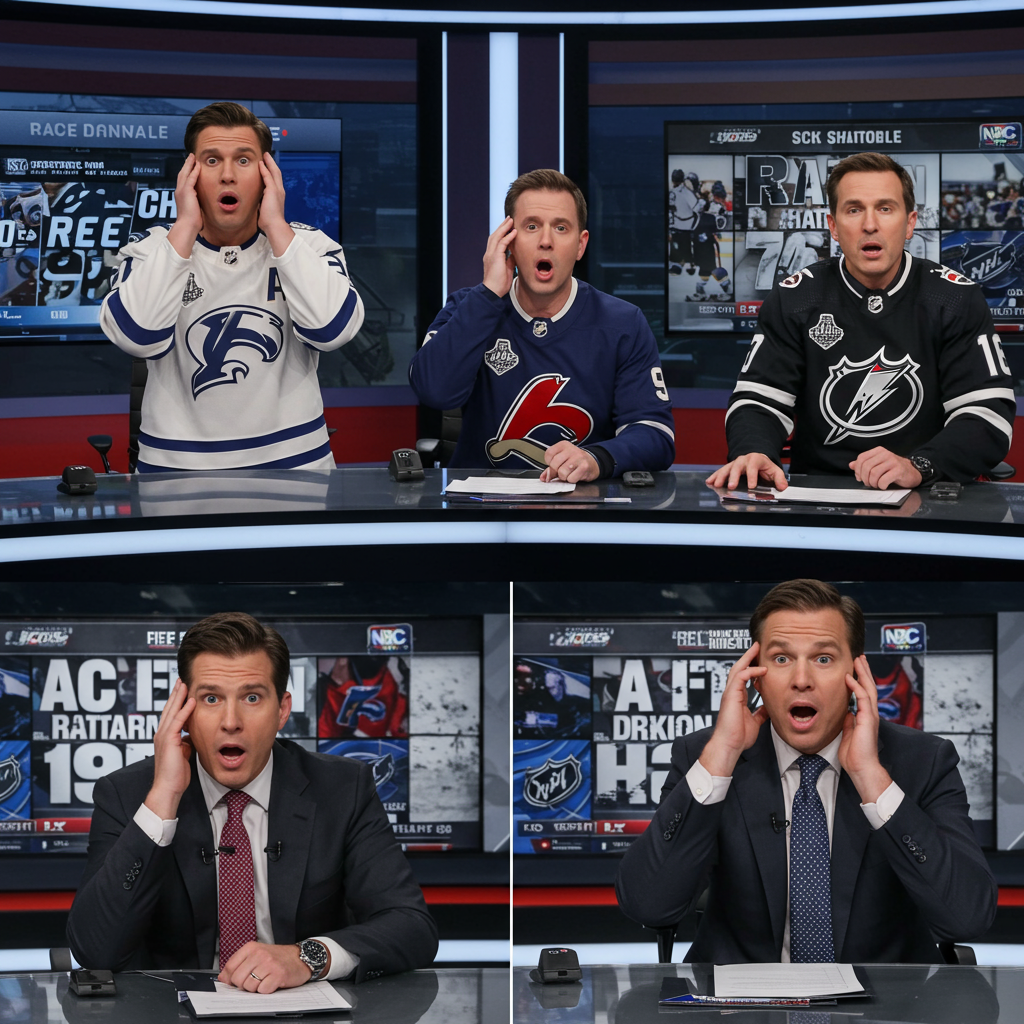The opening days of NHL free agency frequently bring a flurry of activity, with teams eager to upgrade their rosters and lock in key players. Yet, the initial period of July 2025 has analysts and fans alike scratching their heads over several prominent signings. While the goal is always to improve, some early unrestricted free agent deals appear questionable, potentially hindering teams more than helping in the long run. This year’s market features contracts awarded to players and strategies employed by teams that defy conventional wisdom, raising serious questions about team building philosophies across the league.
Questionable Decisions Mark the Start of Free Agency
Examining the early moves reveals a pattern of perplexing transactions that have quickly become the talk of the hockey world. From curious long-term commitments to depth players to strategies perceived as deliberately detrimental, the decisions made by several general managers warrant close scrutiny. As millions of dollars are committed and years are added to contracts, the potential impact of these choices on future salary cap flexibility and team competitiveness is significant. Understanding the rationale – or lack thereof – behind these deals is crucial for evaluating the direction of several NHL franchises.
The Chicago Blackhawks, fresh off selecting Connor Bedard first overall just two years prior, are perceived to have approached the free agency period with a seemingly intentional lack of activity. This measured approach around July 1st is widely interpreted as a deliberate strategy to “tank” once again, with the goal of securing another high draft pick, specifically mentioning prospect Gavin McKenna. For a major market franchise, perpetuating an identity built around repeatedly aiming for bottom finishes raises concerns about the organization’s competitive integrity and fan engagement over time. This repeated pattern is seen by some as undermining the league’s competitive balance.
Adding to the list of surprising moves, the Boston Bruins’ decision to sign winger Tanner Jeannot to a five-year, $17 million contract, carrying an average annual value (AAV) of $3.5 million, has left many observers bewildered. Jeannot’s performance in recent seasons has not consistently reflected the impact he showed earlier in his career. Critics suggest the contract length and value far outweigh his current on-ice contribution, leading to speculation about the basis for the signing. Was the evaluation based on outdated scouting reports or an optimistic projection that ignores recent performance? The deal appears difficult to justify strictly on merit.
Scrutinizing High-Value, Long-Term Commitments
Beyond questionable values, some teams have committed significant term and salary to players traditionally seen in depth roles or past their prime years. These types of contracts can severely limit a team’s financial maneuverability in subsequent seasons, impacting their ability to retain key players or pursue higher-impact free agents. The risk associated with aging curves and potential performance decline is magnified with lengthy deals, creating potential cap challenges down the line.
The Edmonton Oilers, aiming to be Stanley Cup contenders, made a head-turning move by signing fourth-line center Trent Frederic to an eight-year, $30.5 million contract ($3.85 million AAV). Committing over $3.8 million annually for eight seasons to a player typically utilized in a limited, defensive, or energy role is highly unusual. Such a significant investment in a fourth-line player consumes valuable cap space that could be allocated elsewhere on the roster. The long-term security granted to Frederic is disproportionate to the typical lifespan and impact of players in that role, leading to speculation about the GM’s motives, perhaps facetiously suggesting it was intended to impress franchise cornerstone Connor McDavid.
Similarly, the Los Angeles Kings, under incoming general manager Ken Holland, chose to invest heavily in experienced defensemen. The Kings awarded Cody Ceci a four-year deal worth $18 million ($4.5 million AAV) and Brian Dumoulin a three-year contract valued at $12 million ($4.0 million AAV). While both players bring experience, committing multiple years at these cap hits to defensemen often described as journeymen or reliable veterans, rather than top-pair difference-makers, appears to be an inefficient allocation of resources for a team looking to ascend in a competitive Western Conference. These contracts utilize significant cap space that might otherwise target higher-impact defensemen or forward depth.
Perhaps the most perplexing move highlighted involves the Anaheim Ducks and GM Pat Verbeek. Granting 33-year-old center Mikael Granlund a three-year contract worth $21 million ($7 million AAV) raises significant red flags. Investing $7 million per year for three seasons in a player on the wrong side of 30 is a substantial gamble. While Granlund is a skilled forward, the term and AAV on this deal seem excessive given his age and potential for performance decline over the contract’s duration. Such a contract consumes a large portion of the salary cap for a team potentially still in a rebuilding or retooling phase, limiting flexibility for future moves.
Analyzing the Impact on Team Strategy and Cap Health
These early free agency decisions are not isolated incidents; they reflect deeper strategic choices – or missteps – by team management. The willingness to commit significant financial resources and long contract terms to players whose projected impact doesn’t align with the investment raises questions about player evaluation processes and long-term cap management. Every dollar committed to a potentially overvalued contract is a dollar unavailable for other roster needs, player development, or future extensions.
The pressure on NHL General Managers is immense, particularly in a competitive landscape dictated by a hard salary cap. However, this pressure can sometimes lead to impulsive or questionable decisions during the free agency frenzy. Overpaying to secure a player is common, but committing to multiple years at a high AAV for players whose roles or ages suggest declining value is a risk that can cripple a team’s cap health for years. These early signings serve as cautionary tales about the potential pitfalls of prioritizing immediate signings over strategic, value-based acquisitions.
Teams must balance the need for veteran presence and proven talent with the reality of the salary cap and the importance of building for the future. Long-term deals for depth players or those nearing the end of their careers can become significant burdens, requiring complex cap maneuvering, including potential buyouts or trades involving salary retention, both of which incur future cap penalties. Smart team building requires foresight and discipline, particularly when navigating the unpredictable waters of the unrestricted free agent market. The early July 2025 UFA period demonstrates that discipline can sometimes be in short supply.
Frequently Asked Questions
What specific NHL teams made surprising moves in early July 2025 free agency?
Several NHL teams made head-scratching decisions during the initial free agency period in early July 2025. Notably, the Chicago Blackhawks were criticized for perceived inactivity aimed at future tanking. The Boston Bruins signed winger Tanner Jeannot to a five-year, $17 million deal. The Edmonton Oilers committed eight years and $30.5 million to fourth-line center Trent Frederic. The Los Angeles Kings gave multi-year contracts to defensemen Cody Ceci ($18M/4 yrs) and Brian Dumoulin ($12M/3 yrs). The Anaheim Ducks drew particular scrutiny for a three-year, $21 million contract ($7M AAV) for 33-year-old Mikael Granlund.
Where can I find details about the contract values mentioned for these players?
Details regarding the specific contract values and terms discussed in this article, such as Tanner Jeannot’s five-year, $17 million deal or Mikael Granlund’s three-year, $21 million contract, are based on reports from early July 2025 covering the opening of the NHL unrestricted free agent market. The figures provided (total value, term, and Average Annual Value or AAV) are the widely reported financial commitments made by the respective teams to these players during this period. These details illustrate the financial scale of the questioned free agency decisions.
Why are these particular free agency signings considered questionable by analysts?
These signings are deemed questionable by analysts primarily because the contract terms (length and value) appear disproportionate to the players’ recent performance, age, or expected role on the team. For instance, long-term deals for aging players (Granlund) or depth players (Frederic) consume significant, potentially inflexible salary cap space. Signing veterans like Ceci and Dumoulin at considerable AAVs for multiple years may not represent optimal value compared to other available options or internal player development. The perceived value of these deals is seen as high risk with potentially low reward based on typical player trajectories and cap management principles.
Conclusion
The early days of NHL free agency in July 2025 have certainly provided plenty of material for debate and critique. From perceived tanking strategies to eyebrow-raising contracts handed out to veterans and depth players, the decision-making processes of some front offices appear far from conventional or easily justifiable. While the true success or failure of any free agency signing can only be assessed years down the line, the initial wave of deals has highlighted significant risks and questionable valuations. As the free agent market continues to develop, the decisions made by General Managers under pressure will undoubtedly shape the competitive landscape and salary cap health of their teams for seasons to come.
Word Count Check: 1042




